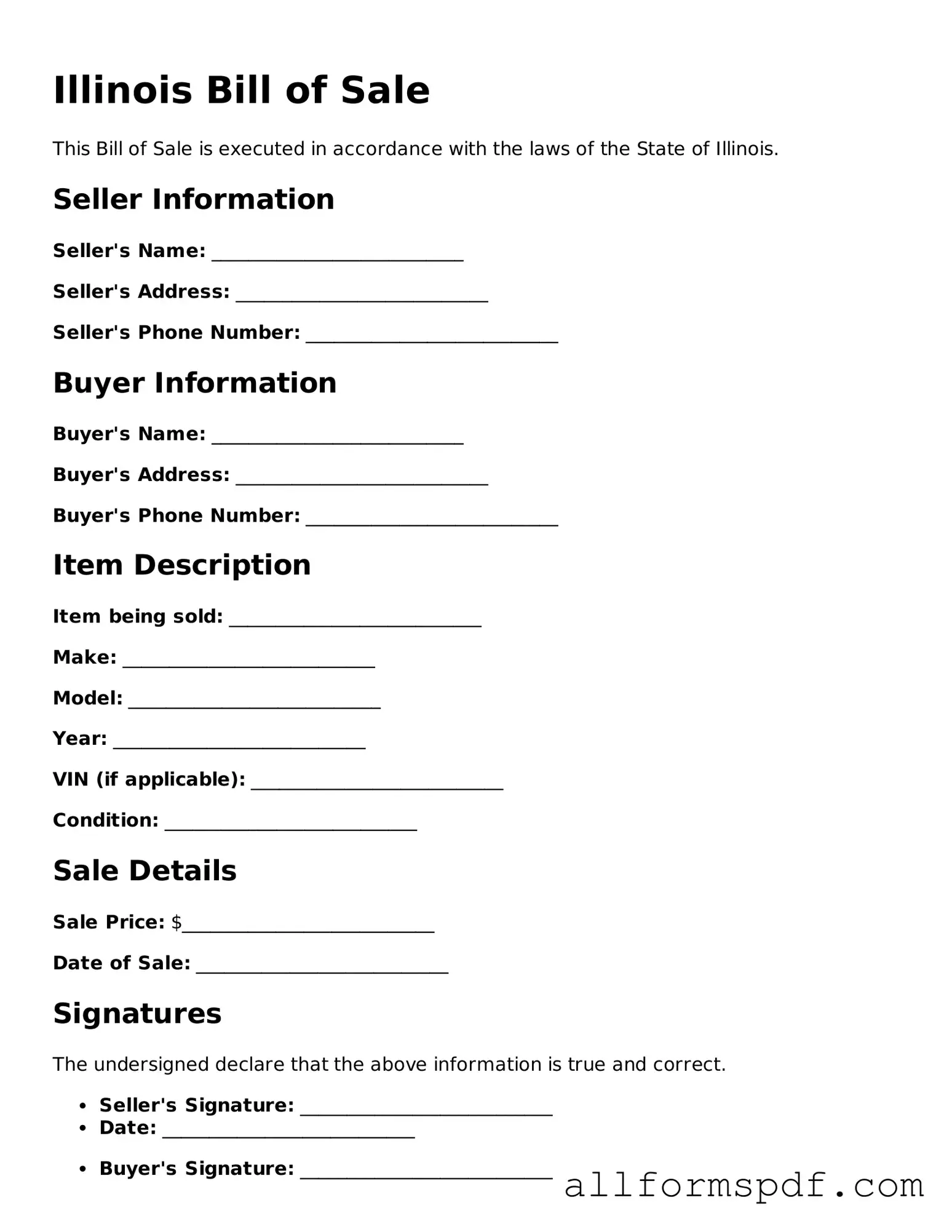When filling out the Illinois Bill of Sale form, many individuals overlook critical details that can lead to complications down the line. One common mistake is failing to include all necessary information about the buyer and seller. Both parties must provide their full names, addresses, and contact information. Omitting any of these details can create confusion and hinder the transfer of ownership.
Another frequent error is neglecting to accurately describe the item being sold. The Bill of Sale should include a detailed description, including the make, model, year, and any unique identifiers such as VIN numbers for vehicles. Without this information, proving ownership or the specifics of the transaction may become problematic.
People often forget to sign the document. A Bill of Sale is not valid unless it is signed by both the buyer and the seller. This signature serves as a legal acknowledgment of the transaction. In some cases, witnesses may also be required, depending on the nature of the sale. Skipping this step can lead to disputes later.
Another mistake involves not providing the date of the transaction. The date is crucial for record-keeping and establishing the timeline of ownership. If the date is missing, it may create issues for both parties, especially if any disputes arise in the future.
Lastly, individuals sometimes fail to keep copies of the Bill of Sale. After completing the form, both the buyer and seller should retain a copy for their records. This document serves as proof of the transaction and can be essential for future reference, such as when registering the vehicle or filing taxes. Without a copy, one may find themselves in a difficult situation later on.
